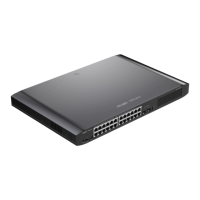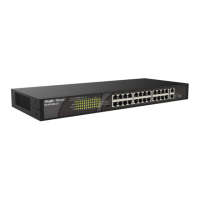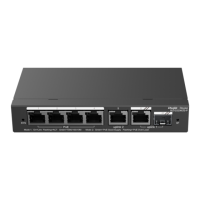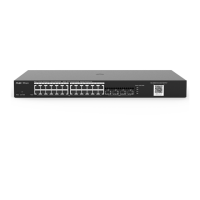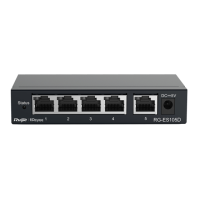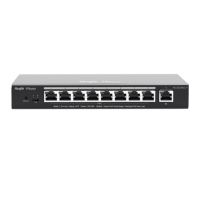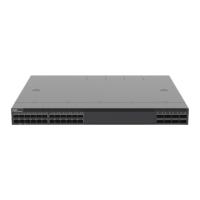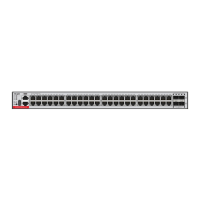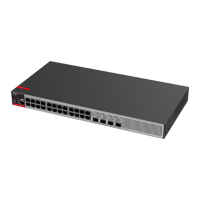Web-based Configuration Guide Diagnostics
138
9.2 Network Tools
The Network Tools page provides three tools to detect the network status: Ping, Traceroute, and DNS Lookup.
9.2.1 Ping
Choose Local Device > Diagnostics > Network Tools.
The Ping command is used to detect the network connectivity.
Select Ping as the diagnosis mode, enter the destination IP address or website address, configure the ping
count and packet size, and click Start to test the network connectivity between the device and the IP address
or website. If "Ping failed" is displayed, the device is not reachable to the IP address or website.
9.2.2 Traceroute
Choose Local Device > Diagnostics > Network Tools.
The Traceroute function is used to identify the network path from one device to another. On a simple network,
the network path may pass through only one routing node or none at all. On a complex network, packets may
pass through dozens of routing nodes before reaching their destination. The traceroute function can be used to
judge the transmission path of data packets during communication.

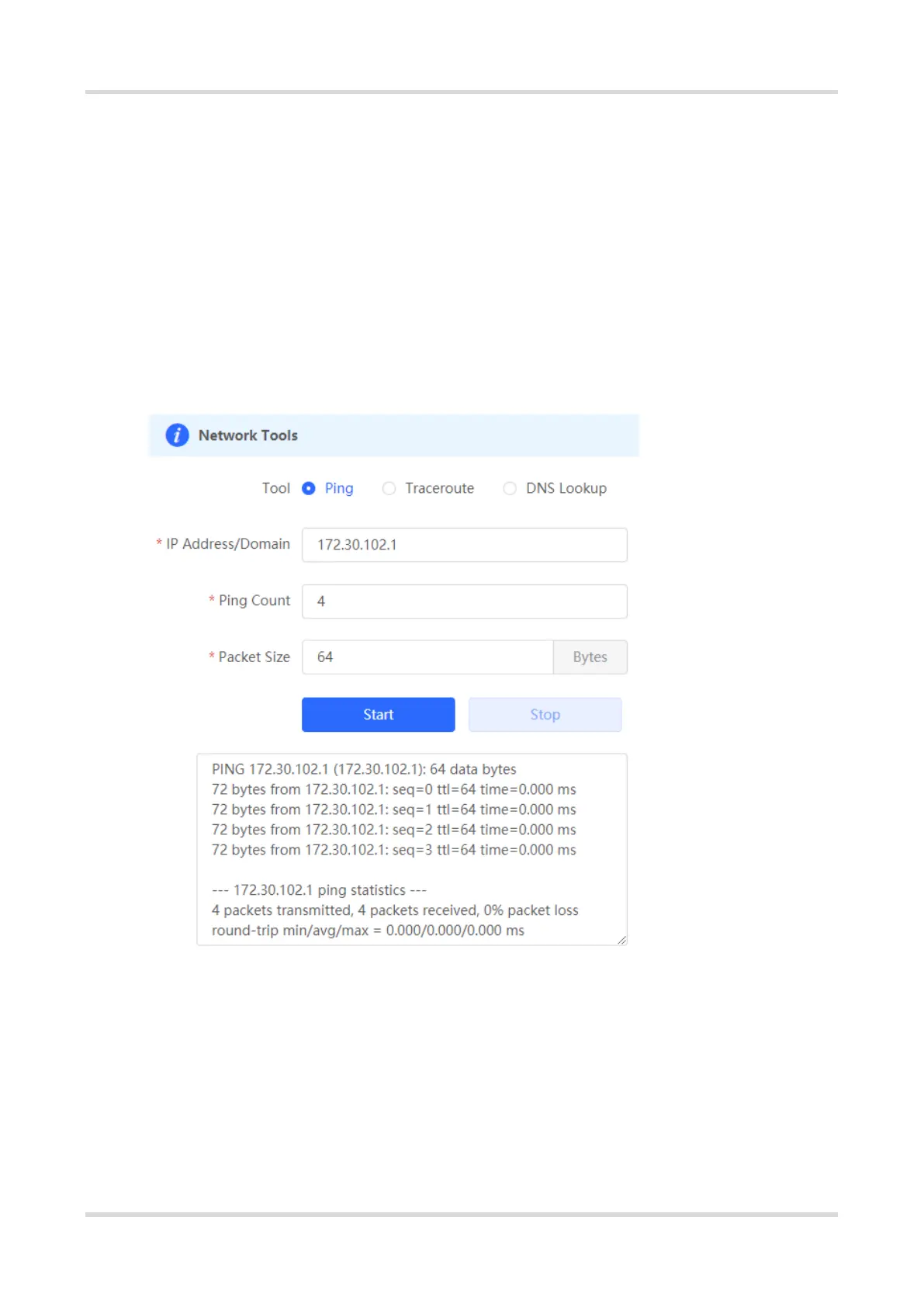